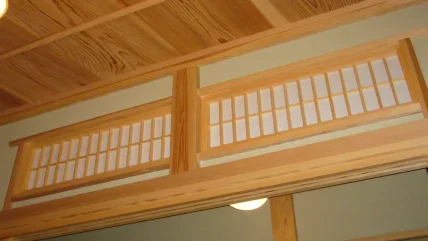
As representatives of the North American wood-based panels industry were due to gather in Virginia for the Composite Panel Association’s Fall Meeting, there would have been a lot to ponder.
About 200 attendees from more than 75 companies were expected at the October 22-24 event in Leesburg, including executives from the largest panel producers. The trajectory of the US economy would have been a big talking point.
The economic background in the US currently presents a mixed picture, depending on who you listen to, with a myriad of reports being released in recent weeks and months.
An increasing number of voices are predicting a soft landing for the US economy, though some still some caution that a spectre of a “near recession” is possible.
Let’s have a look at what some of the economic forecasters are saying.
Goldman Sachs sets quite a positive note and is confidently predicting the US economy is “on its final descent to a soft landing” in its most recent autumn update. It highlights the rate of inflation falling and the job market in a positive shape.
It believes the Fed will keep interest rates steady until a rate cut in the last quarter of 2024. Consumer spending, it says, is expected to be strong, with real disposable income forecast to grow nearly 3% next year amid slowing but solid job gains. Its forecast of US GDP to expand to 2.1% in 2024 on a full-year basis, is higher than many other commentators.
The housing sector is, of course, a key sector for wood-based panels applications.
Goldman Sachs predicts existing home sales to be very weak next year as mortgage rates remain high. Residential investment is predicted to end the year roughly flat.
Meanwhile, the US Treasury says the economy in 2023 has outperformed expectations along three key dimensions: growing economic output, labour market resilience and slowing inflation. It references the IMF as saying that the likelihood of a hard landing has receded and the downside risks from last spring have moderated.
“The United States has seen a particularly strong GDP recovery and is on track this year to reach the level that would have been predicted by the pre-pandemic trend,” it said.
US inflation, it added, had cooled sooner and more quickly than in other advanced economies.
Influential Capital Economics believes signs point to the real economy still heading for a near recession but more progress on bringing core inflation back toward the 2% target should eventually persuade the Fed to begin cutting interest rates again in the first half of next year.
The Conference Board Economic Forecast for the US Economy says US consumer spending has held up remarkably well this year despite the elevated inflation and interest rates. But it says mounting headwinds early next year could lead to a very short and shallow recession. Dissipating pandemic savings and rising consumer debt are additional facts it cites in its estimations. It forecasts real GDP will grow by 2.4% in 2023, and then fall to 0.8% in 2024.
“Thus, we forecast that overall consumer spending growth will slow towards year end and then contract in Q1 2024 and Q2 2024.
As inflation and interest rates abate later in 2024, we expect consumption to begin to expand once more.”
It acknowledged a persistent demand for new homes and a dearth of supply. However, until high interest rates begin to come down, it doesn’t expect to see a big increase in residential investment.
HOUSEBUILDING AND REMODELLING ACTIVITY
The National Association of Home Builders’ latest report for October references the “stubbornly high mortgage rates” that have remained above 7% for the past two months and continue to take a heavy toll on builder confidence.
The National Association of Home Builders (NAHB)/Wells Fargo Housing Market Index (HMI) in October registered a third consecutive monthly drop in builder confidence for newly built single-family homes.
“Buyers continue to be priced out of the market at these levels of interest rates, particularly younger households,” NAHB said. “Additionally, elevated rates are also increasing the cost and decreasing the availability of builder development and construction loans, which harms supply and contributes to lower housing affordability.”
As a result of the extended high interest environment, many builders continue to reduce home prices to boost sales, with the average price discount remaining at 6%.
The US Census Bureau’s new home construction stats are also good indicators, chronicling permits issued, starts and completions.
Building permits authorised in September were at a seasonally adjusted annual rate (SAAR) of 1,473,000 – 4.4% below the revised August rate of 1,541,000 and 7.2% below the September 2022 rate of 1,588,000.
Privately-owned housing starts in September were at a SAAR of 1,358,000. This is 7% above the revised August estimate of 1,269,000 but is 7.2% below the September 2022 rate of 1,463,000.
Privately-owned housing completions in September were at a SAAR of 1,453,000 – 6.6% above the revised August estimate of 1,363,000 and is 1% above the September 2022 rate of 1,438,000.
In terms of remodelling/refurbishing activity – another big driver of wood product use – the latest Leading Indicator of Remodelling Activity (LIRA), released by the Remodelling Futures Program at the Joint Centre for Housing Studies of Harvard University, projects annual owner expenditures for home updates and maintenance to decline by 7.7% from Q3, 2023 to Q3, 2024.
“The ongoing weakness in the housing market caused by high interest rates and low supply of existing homes is expected to weigh on remodelling activity next year,” said Carlos Martín, project director of the Remodelling Futures Program at the Centre.
“Homeowner concerns about the health and direction of the broader economy may also dampen plans for remodelling projects.” Annual spending on improvements and repairs is projected to fall from US$489bn in Q3, 2023 to US$452bn in Q3,2024, it said.
“While the rate of market decline should decelerate significantly in the second part of the year, 2024 is shaping up to be a challenging year for home remodelling.”
NORTH AMERICAN PANEL INDUSTRY
Panel producer financial updates are an important indication of market realities. OSB giant LP Building reported that its OSB net sales decreased by 14% in Q3 on a year ago to US$335m, primarily due to lower volumes (-19%) partially offset by higher prices (+6%).
However, the year-over-year net sales decrease of US$1.051bn for the nine months ended September 30, 2023 reflects a US$813m decrease in OSB prices and a US$115m decrease in sales volumes primarily from market curtailments.
Adjusted EBITDA increased year-overyear by US$7m in Q3, 2023, reflecting the net impact of higher OSB commodity prices and lower mill-related costs, partially offset by lower sales volumes. Adjusted EBITDA decreased year-over-year by US$860m for the nine months ended September 30, 2023.
So, while it has been a challenging year in OSB markets, LP regards the most recent Q3 results as “strong”.
Weyerhaeuser’s wood products division (lumber and OSB) in Q3 reported net sales of US$1.53bn (Q3, 2022: US$1.76bn) and adjusted EBITDA of US$328m (Q3, 2022: US$395m). OSB sales remained consistent with the year previous at US$284m and volumes were slightly down.
West Fraser’s most recent update for its North American engineered wood products division show the stark contrast between 2022 and 2023 in sales. OSB sales in the first nine months of 2023 totalled US$1.482bn (Q1-3,2022: US$2.557bn). Production and shipments for the comparison period was broadly similar.
But Q3, 2023 was a distinct improvement on the preceding quarter in terms of sales and earnings.
In its Q3 report, West Fraser says demand for new home construction and its wood building products may decline in the near term should the broader economy and employment slow or interest rates remain elevated or increase further than currently expected, impacting consumer sentiment and housing affordability.
Q2, 2023 panel shipment data from the Composite Panel Association shows that North American particleboard sales fell by 17% versus a year earlier, while MDF/HDF sales dipped by 24%.
Its statistics show the buoyant performance of the North American woodbased panels sector ended in the second half of 2022.
In 2022, particleboard sales decreased by 4% to 5.775 million m³ compared to the 2021. MDF/HDF sales dropped by 8% to 3.596 million m3.
Another relevant economic indicator is the US Census Bureau’s 2023 US wood product manufacturing sales data. It recorded US wood product manufacturing sales increasing by 5.9% in Q2, 2023 from Q1 to US$29.9bn, but this was down 26.9% from the same period in 2022.
Furniture sales increased 2.8% from Q1 to US$19.6bn but were 7.7% lower compared with Q2, 2022.






